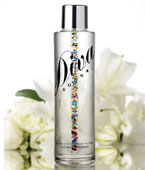Diva Says: Identity Issues and Your Passport
Even if you are planning to fly solo domestically, it’s always helpful to have a passport or make sure your passport is up-to-date. You never know when you might win that free trip to Paris! So, in this chapter we’ll deal with the mundane act of getting or reviewing your passport; once this is done, we can get on to the fun stuff.
Even if you are planning to fly solo domestically, it’s always helpful to have a passport or make sure your passport is up-to-date. You never know when you might win that free trip to Paris! So, in this chapter we’ll deal with the mundane act of getting or reviewing your passport; once this is done, we can get on to the fun stuff.
Preparing for a trip takes a substantial amount of planning, and getting a passport should be a top action item. Having a passport is much like having a doctor-you really don’t think too much about it until you need one. Even if your plans don’t take you out of America, it’s still a good piece of identification to have. Basically, a passport is a form of identity that proves you are a citizen of the United States, thereby granting you the rights and privileges that are bestowed upon U.S. citizens by foreign countries.
That might not mean much to you now, but it will once you decide to cross the seas.
My dear friend Mindy was the lucky winner of a trip to Japan. Unfortunately, the trip was planned for the following week and Mindy didn’t have a passport. She had ten days to get one. She managed, as she does with everything in her life, but her trip preparation would have been a lot less stressful had she already possessed a passport. She had to take a few days off work to run around getting the needed documents, which included having her mom find her original birth certificate and overnight it from Illinois. Although she made her plane and enjoyed a wonderful free vacation to Japan, others have not been so lucky. Another friend was traveling without her husband in Italy when she ended up in a Sicilian hospital for five days. Her husband was unable to be with her during this frightening time because he did not have a passport. So, even if you don’t think that you will ever go overseas, a loved one might need you when he or she does.
Perhaps you already have a passport but haven’t looked at it in a while. I recommend that you do, because things might have changed since your last trip-such as a marriage or divorce. After my friend Lynda got married, she didn’t think about changing her last name on her passport. Nor was her travel agent thinking there would be a problem with her last name; she had been married for six months by then. Lynda and her husband were off to the Bahamas for a week in the sun. When she checked in at San Francisco International Airport, she found her airline ticket to Miami was in her married name, while her passport was in her maiden name. The only way the airline would let her board her flight was to get a notary to the airport to notarize her passport with her new married name. The notary came within the hour, but the couple missed their connecting flights due to this hassle.
Just as important as making sure your passport has all your correct information is ensuring that it’s still valid. My friend Lyndie found out the hard way that, in Bali, you couldn’t enter the country if your passport was going to expire within six months. While in Thailand, trying to catch her connecting flight to Bali, she was informed by a customs agent that she couldn’t go to Bali until she renewed her passport. She had to wait until Monday to renew her passport at the American Consulate. It was a Saturday morning, and Lyndie had been traveling for twenty hours. She lost two days of travel and was unable to see much of Bali. To avoid such disappointment, once you know where you’re going, it’s a good idea to check to see what the passport requirements are for that country. For more information about specific country requirements, check out the U.S. Department of State, Bureau of Consular Affairs, Office of Public Affairs & Policy Coordination, at http://travel.state.gov/foreignentryreqs.html. There you’ll find every country of the world listed, and what they require from U.S. citizens. You’ll also find helpful information about your passport and visa.
The easiest way to get information about obtaining a passport is online at http://travel.state.gov/passport_easy.html. There you will get all the details you need to start the process and you can download the appropriate forms. Please note that if you’re applying for your passport for the first time, you need to do so in person. So plan on spending some time gathering the proofs of identity you’ll need, filling out the paperwork, and going to one of the five thousand locations across the United States that process passports. Thankfully, these locations include many federal, state, and probate courts, some post offices, libraries, and a number of county and municipal offices. These designated acceptance facilities are usually pretty convenient because they tend to be near your home or workplace. To find the
location nearest you, check out http://iafdb.travel.state.gov/.
When you enter your city, state, and zip code, it will give you a list of facilities
within a fifty-mile radius. If you can’t download the forms from the web, go to your
local travel agent or post office and get the needed forms. This process is not necessarily
stressful, but it is tedious and time-consuming. It can take up to sixty days to get your
passport, so get ready to wait. But if you need to get out of town fast, the government
offers you express service for an additional sixty dollars. With this service, you’ll
get your passport within ten days. There are also many private services that claim they
can get you your passport in twenty-four hours, but when it comes to something as
important as a passport, I wouldn’t take a chance with a third-party vendor.
Picture Perfect
One of the items you will have to provide to get your passport is a 2×2 color picture of
yourself for the inside flap. You can get these photos done at most Kinko’s, one-hour
photo shops, and some mall locations. These photos tend not to be very flattering,
so I’ve included a few secrets for taking a gorgeous photo that you’ll be proud of for
the next ten years. Yes, ten years! Passports last longer than many relationships.
The makeup basics are as follows:
- Avoid dark eyeliner or too much mascara.
- Wear your hair in its usual style and out of your face (unless you have a really
bad hair cut, and if you do, I recommend a change). - Foundation is your friend. So is face powder; use it to remove any shine.
- Allow your lips a bit more room via a lip liner. You usually lose some lip when
smiling, and you’ll be smiling in this photo. Don’t just outline your lips;
use complementary lip liner and lipstick. - Be gentle with colors on your face, but do wear makeup.
- If in doubt, go to your local department store and get your makeup done right
before you get your picture taken. Just make sure you buy something!
The top you wear is going to show partly in your picture. A black V-neck is always
good. Stay away from white, stripes, loud prints, turtlenecks, and tank tops-you don’t
want to look naked in your shot. Layers can look frumpy, so stick with one simple shirt.
Stay away from pleats and scarves.
Once you are standing in front of the camera, look down; you will see a strip of
masking tape that indicates where your feet should be. Step back about six to ten inches
from the tape. Doing this will take the harsh lighting off your face, as well as give
you more room on the actual photo-your head will not engulf the entire frame. Before
the picture is taken, here are a few hints: Shake your head back and forth easily to
get relaxed (not too much, you don’t want to mess up your hair!). Roll your shoulders
back, stand up straight, move one shoulder forward about an inch, look down, and lift
your head so your chin is parallel to the floor and SMILE. Voilà! You got yourself a
great photo. Review it to make sure you’re happy with it. If not, take it again; you
should be happy with your picture. Remember, this photo will represent you for ten years.
The reason I am so adamant about taking a good photo is because I took my passport
photo before I wrote this, and unfortunately I did everything wrong. I dyed my hair red
two days before I took my photo (I am a natural brunette), I was too close to the camera,
and when the picture was taken I was not ready. I didn’t think about re-taking the
picture, even though I was not happy with it. Now I own a passport with a photo of
myself looking like a pale, sassy redhead who looks like she is about to get hit by a bus.
Not good! Many custom agents have to take a second look when they see my photo and then me. I usually respond with a “Yeah, I know I don’t look very good as a redhead.” I’m trying
to learn how to say that in five different languages, since I have to carry that photo
around for another six years.
Once you get your passport, take care of it. The first thing you need to do is make
three color copies of it. Keep one in your luggage, give one to the closest person in
your life, and keep one in your home with other important paperwork such as your birth
certificate and social security card. Also, keep an extra passport-size picture with you
when you travel. If you lose your passport, you’ll have a photo to take to the nearest
consulate to get a new one. With a color copy of your lost or stolen passport, the
process will be almost hassle-free.
While traveling domestically, you don’t need to carry your passport with you at all
times. Keep it in a safe—and easily memorable-place, so you can grab it when you need it.
Make sure you keep it where it won’t be found if your house is burgled. When I lived in
Australia during my modeling career, I shared a ground-floor apartment with another model
that was burgled. I was on a trip at the time and had my passport with me; unfortunately,
my roommate kept her passport in her dresser drawer, with her jewelry. When she came home, her passport and jewelry were both missing.
While traveling in foreign countries, keep your passport on you at all times. Make sure
you carry it very close to your body; don’t have it loose in a bag or in an exposed
pocket. Many hotels take your passport when you check in. The reception desk usually
exchanges your room key for your passport when you leave the hotel for the day.
Here is a quick list of other items to keep in mind:
- If your passport gets wet, check that all your visa stamps are still secure.
- If you are on your second passport, make sure to take the correct one with you on your trips. The old one has a set of holes in it.
- If customs puts a sticker on the outside of your passport when you enter a country, don’t take it off. Many times that is a security pass.
- Make sure you keep the contact information in your passport up-to-date, and write in pencil in order to be able to change it.
- Except for your contact information, don’t write in your passport, but feel free to use post-it notes with important information on them. I keep my frequent-flyer membership numbers on a post-it on the last page of my passport.
- The front of your passport has some important information and phone numbers; you might want to photocopy those pages to keep in your suitcase.
Action Items:
- If you don’t have a passport, make getting one a priority.
- If you do have a passport, ensure all the information is current and correct.
- Get three color copies of your passport made and give them to the appropriate people.Now that we have your passport taken care of, let’s find out what you really want out of this trip.
Discover more from Tango Diva
Subscribe to get the latest posts sent to your email.





